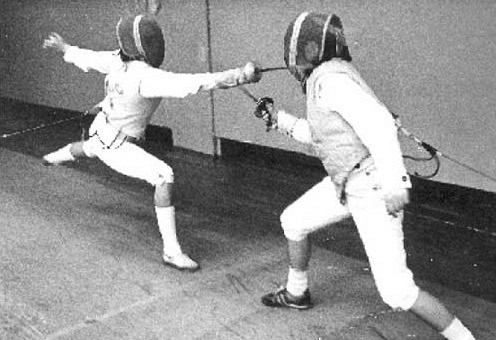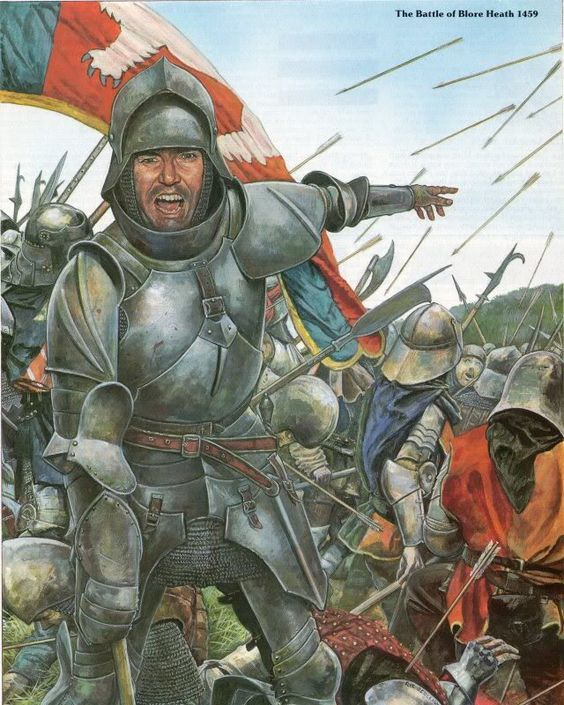How to Improve Fencing Skills
 If you want to start practicing fencing, go to the related WikiHow article, “How to Learn Fencing.” This article is intended for beginner and intermediate level fencers (although it focuses primarily on beginners). It should be noted that some of these methods suggest that the fencer who reads them is a student of the French fencing school (uses the French sword and focuses mainly on small, economical movements). Some of these methods can be applied to people of the Italian school and to those who use a sword with a pistol grip, but with a reduced level of efficiency. Many of these methods completely ignore the type of fencing and the type of weapon used.
If you want to start practicing fencing, go to the related WikiHow article, “How to Learn Fencing.” This article is intended for beginner and intermediate level fencers (although it focuses primarily on beginners). It should be noted that some of these methods suggest that the fencer who reads them is a student of the French fencing school (uses the French sword and focuses mainly on small, economical movements). Some of these methods can be applied to people of the Italian school and to those who use a sword with a pistol grip, but with a reduced level of efficiency. Many of these methods completely ignore the type of fencing and the type of weapon used.
Always take personal lessons. Once a week at least during training and the fencing season. Group lessons are useful, but after a certain moment, the development of the fencer should be supplemented by personal lessons, preferably with the same trainer.
Practice a breakpoint or, for saber fencers, step control. Use wall linings or a pillow, something that you can hit repeatedly without risk of damage, and stick the ribbon in the shape of a cross. Every day, spend time practicing lunging, increasing your distance, making lunges with a jump, lunges forward, deep lunges and, for rapists and fencers, aiming. Continue to train until you reach the center of the cross five or six times in a row.
Sabbers should study point strikes (and apply it in step 2). Point attacks when using a saber can give you a huge advantage over your opponent. With a double lunge and capture of the center of the chest of the rivals, in nine cases out of ten, their eyes will say: “What the hell was that?” Note: With the “new” time in fencing with electric sabers, this action gives the attacker open access to the counterattack of the arm / wrist if it is not performed correctly. When competing with more experienced fencers, great attention should be paid to ensuring that the hand is not reached by the opponent until the end of the action during the final acceleration of the point in the direction of the target.
Make your breakaway beautiful. Detachment and parrying are the cornerstones of the repertoire of any rapier or fencer. Try practicing with another person, not the target. Let him make lateral parries, and you try to make the smallest possible separation, all for a short action, like a deep lunge. Then switch roles, letting them attack you. Make the least parries and practice an instant retaliation. Be sure to make a gap with your fingers, do not make a mistake, starting this movement from the shoulder or arm, this will change your control point and make the shape incorrect. The gap must always be the smallest possible movement made with your fingers!
Gather enough people (six or more), try the Death Ring exercise. For an explanation, we will designate our fencers A, B, C, D, E, and F. A starts in the center, with the rest surrounding it (in alphabetical order). First, B attacks A, which responds by parrying (or trying to do it) with a retaliatory strike or counterattack. Immediately after this, A turns to C, which attacks, again with reaction A. Thus, A turns until he reaches E. After actions between A and E, E and A change places. The process begins again with the attack of A on E. Thus, each one exchanges two actions (one attack and the other reaction) with all the others. If everyone is familiar with the exercise, six people can finish in about 1.5 minutes. By doing this exercise often, you will increase your reaction speed, so that in battle, no attack will catch you by surprise.
Go to the summer program. Many colleges have camps, but there are also major programs in France, Italy, Poland, England – in fact, throughout Europe. The choice within the United States is not bad, but you’d better go abroad if you are serious about sports. If you don’t have enough time, or you just don’t want to go to a foreign country for training, smaller programs are available all over the planet.
Learn to hold your blade between the lines. Most trainers teach that the blade should stay on the line in sixth position, covering this side of the fencer completely. Although this is the most convenient position for beginners, you should not be limited to only the sixth position. By placing the blade between two lines, you make parries faster than you would originally have done. Note: This method only works well for beginners and intermediate fencers. Due to the fact that not a single line is completely protected, advanced fencers use a timely false lunge gap or a false lunge 1-2, which will not be difficult for a fake attempt to parry.




